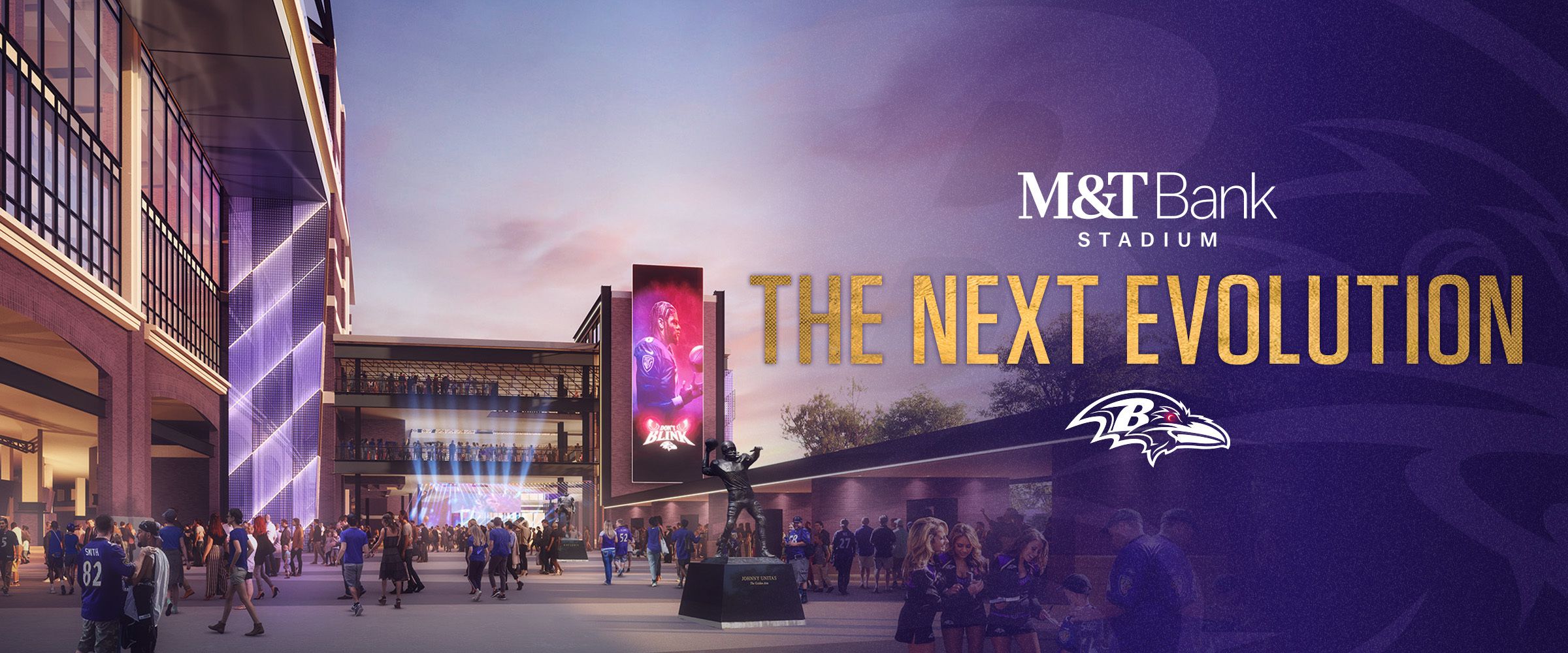Analysts Name Five Pending Free Agents Ravens Should Consider Signing
No, Miami Dolphins wide receiver Jarvis Landry is not on this list.* *
Believe it or not, there will be other free-agent options on the market in March.
Pro Football Focus (PFF) is conducting a free-agency preview for all 32 teams, which includes a "must re-sign" player, "dream splash signing" and two more affordable prospects. Those are discussed below, along with ESPN's "splash" suggestion.
The Ravens don't have a lot of salary-cap space, just a little more than $11 million, which is the sixth least in the NFL, per PFF.
But the team plans on clearing space in the near future. Some NFL teams have already started cutting players; last year the Ravens waited until the first week of March. Owner Steve Bisciotti also talked about restructuring contracts such as that of defensive tackle Brandon Williams.
The Ravens' main focus is to add pass catchers to the offense, but they'll have plenty of competition. Rotoworld editor Evan Silva says there are 10 teams with receiver as one of their top three needs.
"As we've discussed, the free-agent wide receiver market is very poor, and the wide receiver draft class supposedly has some nice depth but not a lot of high-end options," wrote The Baltimore Sun's Jeff Zrebiec. "The Ravens will have to be ultra-aggressive this offseason in getting Joe Flacco some help on the outside."
PFF's Must Re-Sign Player: C Ryan Jensen, 74.9 overall PFF grade
In addition to Jensen, some of the Ravens' key pending free agents include wide receiver Mike Wallace, tight end Benjamin Watson and guard James Hurst. Jensen is the player PFF says the Ravens must retain. If it weren't for his emergence last season, the interior offensive line could've been much worse off after guards Marshal Yanda and Alex Lewis went down with season-ending injuries.
"With his grade improving in each of the past three seasons (from 48.9, to 72.2, to 74.9), and his sixth-ranked pass-blocking efficiency rating (98.4), Jensen is the most important of all the Ravens impending free agents," wrote PFF's Gordon McGuiness.
While the Ravens would like to retain Jensen, they do have other options if he walks. Matt Skura, a 2016 rookie free agent, started 12 games at guard last year and could make the switch to center. The Ravens could also use the draft to help fill the spot.
PFF's Dream Splash Signing: Jacksonville Jaguars WR Allen Robinson
The receiver most Ravens fans would consider a "dream" is Landry, but PFF likes what Robinson, 24, can bring to the table. "The Ravens need a wide receiver who can help Flacco out by winning at the catch point and Robinson would fit the bill perfectly. Robinson has shown a history of making his quarterbacks look better both in Jacksonville and at Penn State in college," wrote McGuinness.
Spotrac.com projects Robinson to cost around the same as Landry (if Landry doesn't get tagged by the Dolphins), but Robinson is coming off a contract year in which he tore his ACL in Week 1. Prior to that, he had a combined 153 catches for 2,283 yards and 20 touchdowns in 2015-16. Assuming he's healthy, Robinson could generate plenty of interest from teams that need a big presence (6-foot-3, 211 pounds) in the middle of the field.
"The fact that his 2017 season ended after just three snaps, there is some trepidation to be had when it comes to Robinson," wrote McGuinness. "Still, 24-year-old wide receivers with the upside of Robinson don't hit the market very often, and if he does he could be the perfect medicine for the Ravens offensive struggles."
ESPN's Splash Signing: Seattle Seahawks TE Jimmy GrahamWhile we're on the topic of "splash" signings, ESPN is bucking the wide receiver trend and suggests nabbing a pass-catching tight end instead. It makes sense because Flacco has shown a history of clicking with tight ends like Watson, Dennis Pitta, Owen Daniels, Todd Heap and more. Only three quarterbacks have targeted tight ends more since Flacco came into the league in 2008: Drew Brees (who's had Graham and Watson), Phillip Rivers (Antonio Gates) and Tom Brady (Rob Gronkowski).
"Graham is a red-zone monster," ESPN wrote. "The 6-foot-7 target scored 10 touchdowns last season (all in the red zone), which led all tight ends. That also doubles the production of the Ravens' tight ends combined (five touchdowns). … There has to be some concern with Graham because he's 31 and is coming off a season in which he caught 57 passes for 520 yards receiving (his lowest since his 2010 rookie season) and produced an average of 9.1 yards per catch (a career low). The determination has to be whether this is a result in Graham's skills or Seattle's porous offensive line."
Graham might be the best tight end on the market this offseason. And, he could come at an affordable price, as Spotrac.com places his market value at three years for $21 million.
PFF's Low-Price Prospect: New England Patriots WR Danny AmendolaIf the Ravens can't swing one of the high-priced free agent wide receivers (or can get one and still want to add another), McGuinness suggests Amendola as a "sensible target." Amendola has been a productive receiver for Brady over the years, and he notched 54 catches from the slot during 2017. At 32, Amendola wouldn't be a long-term solution, but could come cheap if he doesn't re-sign with the Patriots. He agreed to a one-year deal with New England last year, reportedly worth $1.7 million.
PFF's Low-Price Prospect: Atlanta Falcons WR Taylor Gabriel **
"Don't be surprised to see [the Ravens] add multiple players to the position via free agency," McGuinness wrote. "While Amendola would represent a safe pair of hands underneath, Gabriel can create separation downfield and stretch defenses in a way no current player on the Ravens roster truly can." Gabriel, 26, caught 33 passes for 378 yards and one touchdown last year. He played with the Falcons on a one-year deal, reportedly worth $2.7 million.
PFF Ranks Ravens No. 2 in Special Teams
Baltimore finished the season as PFF's second best special teams unit, with only the Minnesota Vikings rated higher.* *
"Justin Tucker continues to be one of, if not the, best kickers in the league, drilling 5-of-7 attempts beyond 50 yards and forcing an average starting field position short of the 24-yard line," PFF's Eric Eager wrote. "Michael Campanaro had a plus season as a return specialist, returning one punt for a touchdown against the Bears and averaging 10.8 yards per return overall."
PFF not only grades every offensive and defensive play of every game of every season, but the website extends that analysis to special teams. Those grades were put into an algorithm to weigh each by how much they contributed to winning.
This isn't the only time the Ravens special teams have been recognized for their elite play in 2017. The Dallas Morning News' Rick Gosselin ranked Baltimore at No. 4 in his well-respected annual rating system.
Quantifying What 'Injury-Prone' Means in the NFL
The label "injury-prone" is often thrown around in the NFL, but what the term means is elusive. It's been more a gut reaction than a quantifiable trait.
So, the folks at Football Outsiders set out to find an analytical approach that helps determine who is actually “injury-prone," or in other words, whether a player's injury history puts them at a higher risk for future injury.
On average, 40 percent of all players will miss at least one game during the season due to injury. That's the baseline, which changes based on prior injury history:
26 percent of players missed at least one game after zero *reported injuries the prior two years
35 percent of players missed at least one game after one reported injury the prior two years
41 percent of players missed at least one game after two reported injuries the prior two years
46 percent of players missed at least one game after three reported injuries the prior two years
55-60 percent of players missed at least one game after six or more reported injuries the prior two years* **
Football Outsiders looked at whether there were any types of injuries that had specific indicators, and some did. Lower extremity muscle injuries (calf, quadriceps, hamstring, and groin issues) followed a similar pattern laid out above.
Injuries that weren't associated with future risk were face/eye and upper extremity (arm, elbow, wrist, hand, thumb, and finger) bone and joint injuries.
"It's clear that a lengthy injury history makes it more likely for players to miss time in the future," wrote Zach Binney. "Such players are indisputably 'injury-prone' relative to players with less of an injury history. However, in all but the most extreme cases, there seems to be at least a 50/50 chance the player will be able to suit up for every game."
Quick Hits
- "[Owner Steve] Bisciotti spoke of adding a few senior-level scouts going forward, but the Ravens will probably have to wait in most cases," wrote Zrebiec. "Scouts typically are under contract through the draft because teams don't want them giving away any secrets." [The Baltimore Sun]











